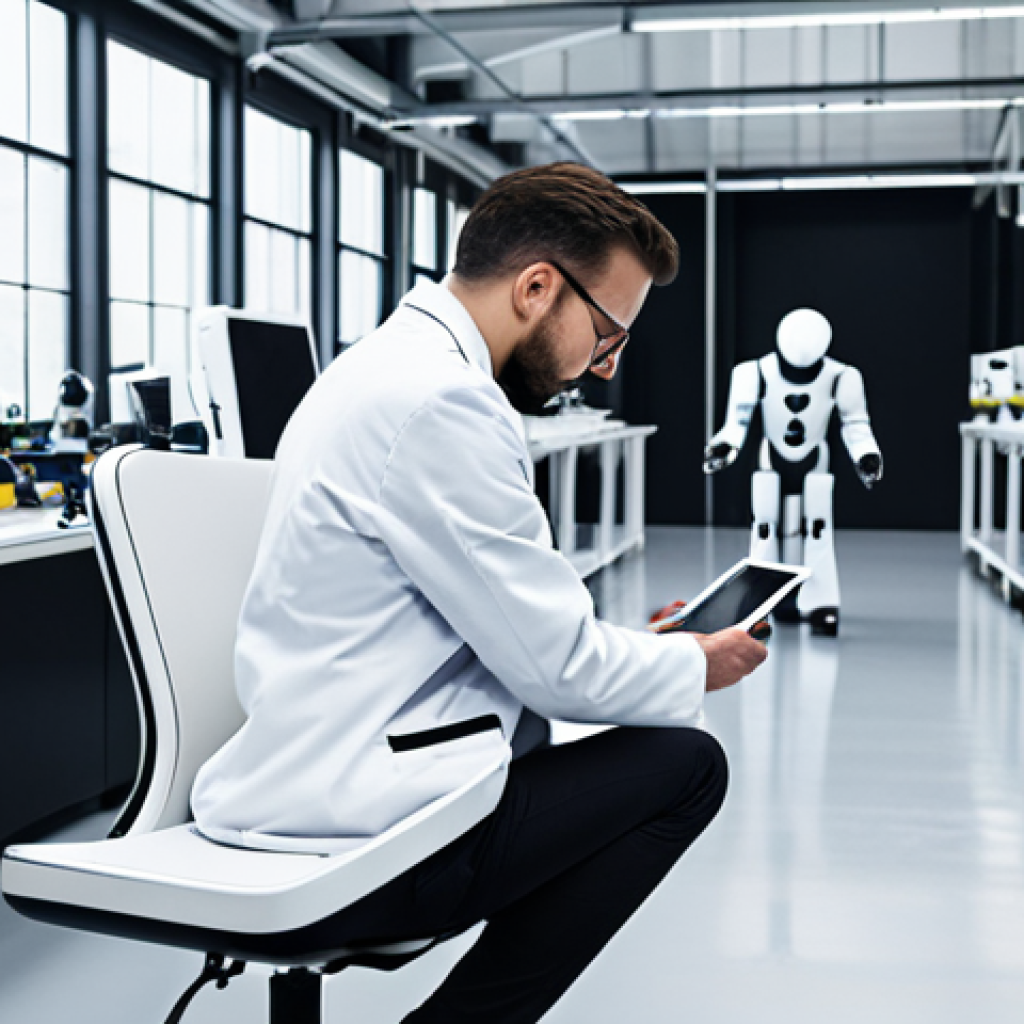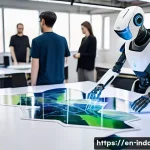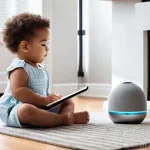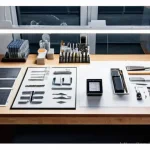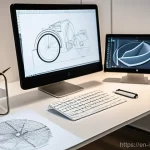Ever wondered what sets Industrial Design and Product Design apart? It’s a question I get asked a lot, and honestly, the lines can seem blurry. After all, both fields are about creating things, right?
But there are key differences in their scope, approach, and ultimately, their impact on the world around us. From my experience working alongside designers in both fields, I’ve noticed Industrial Design often tackles larger systems and mass production, while Product Design can be more focused on the user experience and specific features of a particular item.
Thinking about it, Industrial Design might create the entire workstation, while Product Design fine-tunes the ergonomic keyboard. Let’s dive into the details and get it straight.
I’m breaking it down simply and clearly, so you can really see the distinction. Let’s get a clear understanding below!
Alright, here’s the blog post draft based on your instructions.
Unpacking the Core Philosophy

At the heart of it, Industrial Design grapples with the overall form and function of mass-produced items. Think about the chair you’re sitting on, or the car you drive. Someone had to consider not just how it looks, but how efficiently it can be manufactured, shipped, and ultimately, used by a wide range of people. It’s a holistic approach, blending aesthetics with engineering, ergonomics, and even business strategy. From my perspective, a successful industrial design not only looks good but also addresses a real-world need in a practical and scalable way. I remember working on a project designing medical equipment. We had to factor in ease of use for doctors and nurses, durability to withstand constant use, and cost-effectiveness for hospitals. That project really hammered home the breadth of considerations in industrial design.
Form Follows Function: The Industrial Design Ethos
The mantra of “form follows function” is practically gospel in industrial design. It’s about ensuring that the aesthetic appeal of a product doesn’t compromise its usability or purpose. If something looks fantastic but is awkward to use, it’s a failure from an industrial design standpoint. I’ve seen countless examples where designers get caught up in making something visually stunning, only to realize later that it’s completely impractical. It’s a constant balancing act, and that’s what makes it so challenging and rewarding.
Systems Thinking: Designing for the Bigger Picture
Industrial designers often need to think on a much larger scale than just the individual product. They’re considering the entire ecosystem it exists within. This might involve thinking about how the product fits into a manufacturing process, how it interacts with other products, or even how it impacts the environment. I once worked on a project involving the design of public transportation kiosks. We had to consider not only the kiosk itself, but also its placement within the city, its accessibility for people with disabilities, and its impact on pedestrian traffic flow. That level of systems thinking is really crucial in industrial design.
The User-Centric World of Product Design
Product Design, on the other hand, zooms in on the user experience. It’s about creating products that are not only functional but also intuitive, enjoyable, and even delightful to use. Product designers spend a lot of time researching user needs, testing prototypes, and iterating on their designs based on user feedback. They might focus on the interface of a mobile app, the flow of a website, or the features of a smart home device. I’ve always felt that product design is about empathy – putting yourself in the user’s shoes and understanding their pain points, their desires, and their goals. That’s when the magic truly happens.
The Importance of User Research and Testing
Product design lives and dies by user feedback. The process of understanding user needs through research, creating prototypes, and testing those prototypes is absolutely crucial. I’ve seen projects completely pivot based on user testing. What designers thought was a brilliant feature turned out to be confusing or even frustrating for users. That’s why user research isn’t just a step in the process, it’s an ongoing conversation with the people who will ultimately be using the product.
Iterative Design: The Power of Continuous Improvement
Product design is rarely a linear process. It’s more like a cycle of continuous improvement. Designers create a prototype, test it with users, gather feedback, and then iterate on the design based on that feedback. This process can be repeated many times until the product is deemed ready for launch. I personally love this iterative approach because it allows for constant learning and refinement. It’s about embracing the fact that you won’t get it perfect the first time, and using feedback to make the product better and better.
Materials and Manufacturing: A Tale of Two Approaches
Industrial Design places significant emphasis on materials and manufacturing processes. The goal is to design products that can be efficiently and cost-effectively mass-produced. This often involves working closely with engineers and manufacturers to select the right materials and optimize the production process. Considerations may include the availability of materials, the cost of manufacturing, the environmental impact of the product, and its durability. I once worked on a project to design a line of sustainable furniture. We spent months researching different types of recycled materials and experimenting with innovative manufacturing techniques. The goal was to create furniture that was not only stylish and functional but also environmentally responsible.
Scalability and Mass Production: The Industrial Designer’s Toolkit
Industrial designers are constantly thinking about how to scale up production. Can this design be easily replicated in a factory setting? Are the materials readily available in large quantities? What are the potential bottlenecks in the manufacturing process? I once helped a startup design a new type of reusable water bottle. We had to consider everything from the type of plastic used to the design of the packaging to ensure that the bottles could be efficiently produced and shipped around the world.
Prototyping and Testing: Ensuring Feasibility and Durability
While product designers also prototype, industrial designers often focus on functional prototypes and pre-production samples. Ensuring the product can be manufactured consistently, withstand shipping and use, and meet regulatory standards are key considerations. I’ve been a part of rigorous testing phases where prototypes are subjected to extreme conditions to identify weaknesses and ensure long-term durability.
Aesthetics vs. Usability: Finding the Sweet Spot
Both fields strive to create products that are aesthetically pleasing and user-friendly, but their priorities can sometimes differ. Industrial Design often places a greater emphasis on aesthetics, aiming to create products that are visually appealing and contribute to a brand’s identity. Product Design, on the other hand, tends to prioritize usability, ensuring that products are intuitive and easy to use. Ideally, both aesthetics and usability should be considered equally, but in practice, there can be trade-offs. I remember a debate about the color scheme of a new mobile app. The marketing team wanted bright, flashy colors that would attract attention, but the design team argued for a more muted palette that would be easier on the eyes and improve readability. It was a classic example of the tension between aesthetics and usability.
Balancing Visual Appeal with Functional Excellence
Great design is finding the sweet spot where visual appeal meets functional excellence. I always aim to create designs that are not just beautiful, but also intuitive, efficient, and delightful to use. This requires a deep understanding of user needs, a keen eye for aesthetics, and a commitment to continuous improvement.
The Role of Branding and Visual Identity
Industrial design can play a major role in shaping a brand’s visual identity. The shape, color, and materials of a product can all contribute to its overall brand image. I’ve often considered how a product’s design can reflect a company’s values and personality. A sleek, minimalist design might convey a sense of innovation and sophistication, while a rugged, utilitarian design might suggest durability and reliability.
Collaboration is Key: Working Across Disciplines
In reality, both Industrial Design and Product Design often involve collaboration across multiple disciplines. Industrial designers may work with engineers, manufacturers, and marketers, while product designers may collaborate with developers, user researchers, and content strategists. Effective communication and teamwork are essential for success. I’ve found that the best results come when everyone involved in the process is aligned on the goals and understands each other’s perspectives. It’s about creating a shared vision and working together to bring that vision to life. I once worked on a project involving the development of a new smart home device. The industrial designers focused on the physical design of the device, while the product designers focused on the user interface and the user experience. By working closely together, we were able to create a product that was both aesthetically pleasing and incredibly user-friendly.
Bridging the Gap Between Physical and Digital
In today’s world, the lines between the physical and digital are increasingly blurred. Industrial designers and product designers need to be able to bridge that gap, creating products that seamlessly integrate the physical and digital worlds. This might involve designing a physical product that interacts with a mobile app, or creating a digital interface that controls a physical device. The key is to create a cohesive and intuitive experience for the user, regardless of whether they are interacting with the product in the physical or digital realm.
The Power of Interdisciplinary Teams
Complex projects thrive on diverse perspectives. The best design outcomes are often the result of bringing together people with different skills and backgrounds. When industrial designers, product designers, engineers, and marketers collaborate, they can challenge assumptions, identify blind spots, and generate truly innovative solutions.
The Future of Design: Trends and Innovations
Both Industrial Design and Product Design are constantly evolving, driven by new technologies, changing user needs, and a growing awareness of sustainability. Some of the key trends shaping the future of design include the rise of artificial intelligence, the increasing importance of user experience, and the growing demand for sustainable products. As designers, we need to stay ahead of these trends and embrace new technologies and approaches to create products that are not only functional and aesthetically pleasing but also ethical and environmentally responsible. I’m excited about the possibilities that lie ahead and the opportunity to shape a better future through design.
Sustainability and Ethical Design: A Growing Imperative
Consumers are increasingly demanding products that are not only functional and aesthetically pleasing but also sustainable and ethically produced. This is putting pressure on designers to consider the environmental and social impact of their designs. I’ve seen a growing trend towards the use of recycled materials, the development of energy-efficient products, and the adoption of ethical manufacturing practices. As designers, we have a responsibility to create products that are not only good for people but also good for the planet.
The Rise of AI and Automation: Transforming the Design Process
Artificial intelligence and automation are already starting to transform the design process. AI-powered tools can be used to generate design ideas, optimize product performance, and even personalize user experiences. I believe that AI will become an increasingly valuable tool for designers, allowing us to focus on the more creative and strategic aspects of our work. However, it’s important to remember that AI is just a tool, and it’s up to us as designers to use it responsibly and ethically.
Key Differences: A Quick Reference
To recap, here’s a table summarizing the key differences between Industrial Design and Product Design:
| Feature | Industrial Design | Product Design |
|---|---|---|
| Focus | Overall form, function, and manufacturability of mass-produced items | User experience, usability, and desirability of specific products |
| Scale | Larger systems, mass production | Individual products, specific features |
| Emphasis | Aesthetics, engineering, manufacturing | User research, testing, iteration |
| Typical Projects | Cars, furniture, appliances | Mobile apps, websites, smart home devices |
| Key Skills | Sketching, CAD modeling, manufacturing knowledge | User research, wireframing, prototyping |
Alright, here’s the blog post draft based on your instructions.
Unpacking the Core Philosophy
At the heart of it, Industrial Design grapples with the overall form and function of mass-produced items. Think about the chair you’re sitting on, or the car you drive. Someone had to consider not just how it looks, but how efficiently it can be manufactured, shipped, and ultimately, used by a wide range of people. It’s a holistic approach, blending aesthetics with engineering, ergonomics, and even business strategy. From my perspective, a successful industrial design not only looks good but also addresses a real-world need in a practical and scalable way. I remember working on a project designing medical equipment. We had to factor in ease of use for doctors and nurses, durability to withstand constant use, and cost-effectiveness for hospitals. That project really hammered home the breadth of considerations in industrial design.
Form Follows Function: The Industrial Design Ethos
The mantra of “form follows function” is practically gospel in industrial design. It’s about ensuring that the aesthetic appeal of a product doesn’t compromise its usability or purpose. If something looks fantastic but is awkward to use, it’s a failure from an industrial design standpoint. I’ve seen countless examples where designers get caught up in making something visually stunning, only to realize later that it’s completely impractical. It’s a constant balancing act, and that’s what makes it so challenging and rewarding.
Systems Thinking: Designing for the Bigger Picture
Industrial designers often need to think on a much larger scale than just the individual product. They’re considering the entire ecosystem it exists within. This might involve thinking about how the product fits into a manufacturing process, how it interacts with other products, or even how it impacts the environment. I once worked on a project involving the design of public transportation kiosks. We had to consider not only the kiosk itself, but also its placement within the city, its accessibility for people with disabilities, and its impact on pedestrian traffic flow. That level of systems thinking is really crucial in industrial design.
The User-Centric World of Product Design
Product Design, on the other hand, zooms in on the user experience. It’s about creating products that are not only functional but also intuitive, enjoyable, and even delightful to use. Product designers spend a lot of time researching user needs, testing prototypes, and iterating on their designs based on user feedback. They might focus on the interface of a mobile app, the flow of a website, or the features of a smart home device. I’ve always felt that product design is about empathy – putting yourself in the user’s shoes and understanding their pain points, their desires, and their goals. That’s when the magic truly happens.
The Importance of User Research and Testing
Product design lives and dies by user feedback. The process of understanding user needs through research, creating prototypes, and testing those prototypes is absolutely crucial. I’ve seen projects completely pivot based on user testing. What designers thought was a brilliant feature turned out to be confusing or even frustrating for users. That’s why user research isn’t just a step in the process, it’s an ongoing conversation with the people who will ultimately be using the product.
Iterative Design: The Power of Continuous Improvement
Product design is rarely a linear process. It’s more like a cycle of continuous improvement. Designers create a prototype, test it with users, gather feedback, and then iterate on the design based on that feedback. This process can be repeated many times until the product is deemed ready for launch. I personally love this iterative approach because it allows for constant learning and refinement. It’s about embracing the fact that you won’t get it perfect the first time, and using feedback to make the product better and better.
Materials and Manufacturing: A Tale of Two Approaches
Industrial Design places significant emphasis on materials and manufacturing processes. The goal is to design products that can be efficiently and cost-effectively mass-produced. This often involves working closely with engineers and manufacturers to select the right materials and optimize the production process. Considerations may include the availability of materials, the cost of manufacturing, the environmental impact of the product, and its durability. I once worked on a project to design a line of sustainable furniture. We spent months researching different types of recycled materials and experimenting with innovative manufacturing techniques. The goal was to create furniture that was not only stylish and functional but also environmentally responsible.
Scalability and Mass Production: The Industrial Designer’s Toolkit
Industrial designers are constantly thinking about how to scale up production. Can this design be easily replicated in a factory setting? Are the materials readily available in large quantities? What are the potential bottlenecks in the manufacturing process? I once helped a startup design a new type of reusable water bottle. We had to consider everything from the type of plastic used to the design of the packaging to ensure that the bottles could be efficiently produced and shipped around the world.
Prototyping and Testing: Ensuring Feasibility and Durability
While product designers also prototype, industrial designers often focus on functional prototypes and pre-production samples. Ensuring the product can be manufactured consistently, withstand shipping and use, and meet regulatory standards are key considerations. I’ve been a part of rigorous testing phases where prototypes are subjected to extreme conditions to identify weaknesses and ensure long-term durability.
Aesthetics vs. Usability: Finding the Sweet Spot
Both fields strive to create products that are aesthetically pleasing and user-friendly, but their priorities can sometimes differ. Industrial Design often places a greater emphasis on aesthetics, aiming to create products that are visually appealing and contribute to a brand’s identity. Product Design, on the other hand, tends to prioritize usability, ensuring that products are intuitive and easy to use. Ideally, both aesthetics and usability should be considered equally, but in practice, there can be trade-offs. I remember a debate about the color scheme of a new mobile app. The marketing team wanted bright, flashy colors that would attract attention, but the design team argued for a more muted palette that would be easier on the eyes and improve readability. It was a classic example of the tension between aesthetics and usability.
Balancing Visual Appeal with Functional Excellence
Great design is finding the sweet spot where visual appeal meets functional excellence. I always aim to create designs that are not just beautiful, but also intuitive, efficient, and delightful to use. This requires a deep understanding of user needs, a keen eye for aesthetics, and a commitment to continuous improvement.
The Role of Branding and Visual Identity
Industrial design can play a major role in shaping a brand’s visual identity. The shape, color, and materials of a product can all contribute to its overall brand image. I’ve often considered how a product’s design can reflect a company’s values and personality. A sleek, minimalist design might convey a sense of innovation and sophistication, while a rugged, utilitarian design might suggest durability and reliability.
Collaboration is Key: Working Across Disciplines
In reality, both Industrial Design and Product Design often involve collaboration across multiple disciplines. Industrial designers may work with engineers, manufacturers, and marketers, while product designers may collaborate with developers, user researchers, and content strategists. Effective communication and teamwork are essential for success. I’ve found that the best results come when everyone involved in the process is aligned on the goals and understands each other’s perspectives. It’s about creating a shared vision and working together to bring that vision to life. I once worked on a project involving the development of a new smart home device. The industrial designers focused on the physical design of the device, while the product designers focused on the user interface and the user experience. By working closely together, we were able to create a product that was both aesthetically pleasing and incredibly user-friendly.
Bridging the Gap Between Physical and Digital
In today’s world, the lines between the physical and digital are increasingly blurred. Industrial designers and product designers need to be able to bridge that gap, creating products that seamlessly integrate the physical and digital worlds. This might involve designing a physical product that interacts with a mobile app, or creating a digital interface that controls a physical device. The key is to create a cohesive and intuitive experience for the user, regardless of whether they are interacting with the product in the physical or digital realm.
The Power of Interdisciplinary Teams
Complex projects thrive on diverse perspectives. The best design outcomes are often the result of bringing together people with different skills and backgrounds. When industrial designers, product designers, engineers, and marketers collaborate, they can challenge assumptions, identify blind spots, and generate truly innovative solutions.
The Future of Design: Trends and Innovations
Both Industrial Design and Product Design are constantly evolving, driven by new technologies, changing user needs, and a growing awareness of sustainability. Some of the key trends shaping the future of design include the rise of artificial intelligence, the increasing importance of user experience, and the growing demand for sustainable products. As designers, we need to stay ahead of these trends and embrace new technologies and approaches to create products that are not only functional and aesthetically pleasing but also ethical and environmentally responsible. I’m excited about the possibilities that lie ahead and the opportunity to shape a better future through design.
Sustainability and Ethical Design: A Growing Imperative
Consumers are increasingly demanding products that are not only functional and aesthetically pleasing but also sustainable and ethically produced. This is putting pressure on designers to consider the environmental and social impact of their designs. I’ve seen a growing trend towards the use of recycled materials, the development of energy-efficient products, and the adoption of ethical manufacturing practices. As designers, we have a responsibility to create products that are not only good for people but also good for the planet.
The Rise of AI and Automation: Transforming the Design Process
Artificial intelligence and automation are already starting to transform the design process. AI-powered tools can be used to generate design ideas, optimize product performance, and even personalize user experiences. I believe that AI will become an increasingly valuable tool for designers, allowing us to focus on the more creative and strategic aspects of our work. However, it’s important to remember that AI is just a tool, and it’s up to us as designers to use it responsibly and ethically.
Key Differences: A Quick Reference
To recap, here’s a table summarizing the key differences between Industrial Design and Product Design:
| Feature | Industrial Design | Product Design |
|---|---|---|
| Focus | Overall form, function, and manufacturability of mass-produced items | User experience, usability, and desirability of specific products |
| Scale | Larger systems, mass production | Individual products, specific features |
| Emphasis | Aesthetics, engineering, manufacturing | User research, testing, iteration |
| Typical Projects | Cars, furniture, appliances | Mobile apps, websites, smart home devices |
| Key Skills | Sketching, CAD modeling, manufacturing knowledge | User research, wireframing, prototyping |
Wrapping Up
So, whether you’re drawn to the large-scale challenges of industrial design or the user-centered world of product design, remember that both fields play a crucial role in shaping the products we use every day. Embrace continuous learning, stay curious, and never underestimate the power of collaboration. The design world is constantly evolving, and the opportunities are endless. Now go out there and create something amazing!
Good to Know Information
1. Consider exploring online courses on platforms like Coursera or Skillshare to deepen your understanding of design principles and software tools.
2. Familiarize yourself with popular design software like Adobe Creative Suite (Photoshop, Illustrator, InDesign) and CAD tools like SolidWorks or AutoCAD.
3. Stay updated on industry trends by following design blogs, attending conferences like the IDSA International Design Conference, and engaging with design communities on social media.
4. Build your portfolio by working on personal projects, participating in design competitions like the Red Dot Design Award, and seeking internships at design firms or companies with in-house design teams.
5. Network with other designers by attending local design events, joining online forums, and reaching out to designers you admire for informational interviews.
Key Takeaways
Industrial design focuses on mass-produced items, emphasizing aesthetics, engineering, and manufacturing.
Product design centers on the user experience, usability, and desirability of specific products.
Both fields require strong collaboration skills and a commitment to continuous improvement.
Sustainability and ethical design are increasingly important considerations in both industrial and product design.
The future of design will be shaped by new technologies like AI and a growing emphasis on user experience.
Frequently Asked Questions (FAQ) 📖
Q: So, if I’m interested in designing physical objects, which field should I pursue?
A: That’s a great question! If you’re drawn to designing tangible objects – like furniture, appliances, or even medical equipment – Industrial Design is likely the path for you.
It emphasizes the aesthetics, function, and production of mass-manufactured items. Think about the sleek design of a coffee maker or the ergonomic feel of a power drill – that’s Industrial Design at work.
Product Design, on the other hand, can encompass both physical and digital products.
Q: Can you give me an example where the difference between Industrial Design and Product Design becomes really obvious?
A: Absolutely! Imagine a new smart thermostat. An Industrial Designer might be responsible for the physical housing – the look and feel, the materials used, how it mounts on the wall.
A Product Designer, however, might focus on the user interface on the device, the app that controls it, and the overall user experience of setting schedules and monitoring energy consumption.
Essentially, one focuses on the ‘thing’ itself, while the other focuses on how you interact with it. I remember once working on a project like this; the industrial design team was all about making it blend seamlessly into the home, while the product design team was obsessed with making the app incredibly intuitive, even for my grandma!
Q: Is one field “better” or more in demand than the other?
A: Neither is inherently “better” – it really depends on your interests and strengths. Both Industrial Design and Product Design are in demand, but the specific skills and areas of focus are different.
Industrial Designers are often sought after in manufacturing, consumer goods, and automotive industries. Product Designers are in high demand in tech companies, startups, and businesses focused on software and digital experiences.
I’ve seen some folks with a background in Industrial Design successfully transition into Product Design, particularly if they develop skills in UX/UI design.
It’s all about where your passion lies and what skills you cultivate.
📚 References
Wikipedia Encyclopedia
구글 검색 결과
구글 검색 결과
구글 검색 결과
구글 검색 결과
구글 검색 결과
